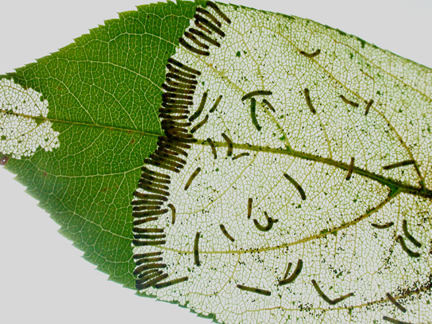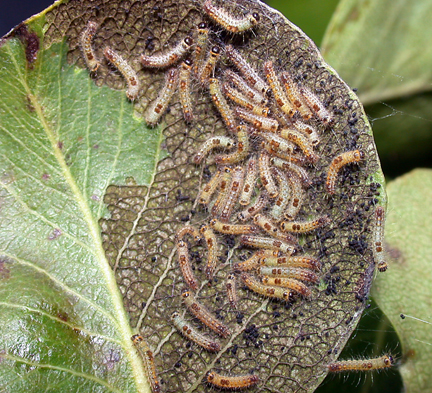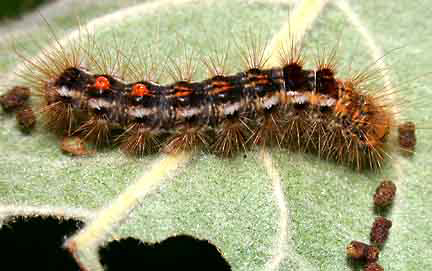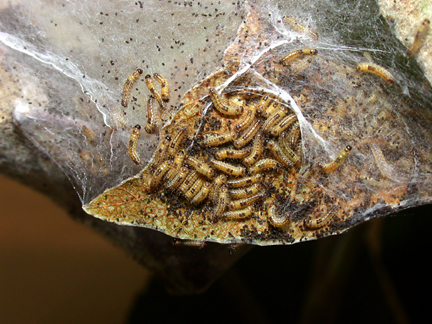Fall nests in which the caterpillars ovewinter. Fernald and Kirkland (1903) found a mean of 290 caterpillar per web but up to as many as 802 showing the colonies originating from separate egg masses may fuse. Images by permission of Paul Cecil
COMMUNAL FEEDING AND NEST BUILDING
The leaves that the caterpillars encounter when they eclose from their eggs in late July or early August are typically aged and tough. The caterpillars are able to feed only on the softer parts of the leaf, leaving the tough veins untouched. This type of feeding habit is refered to as skeletonizing. Though undocumented, it is likely that a pheromone defines the limits of the foraging arena and serves to hold the colony together. The caterpillars stop feeding in September after having advanced to the second or third instar. Caterpillars lie sequested and quiescent within their nests until the following spring when they resume feeding.
First instar caterpillars skelotonizing the leaf of an apple (Malus) tree. Side by side feeding is a common habit of social caterpillars.
The later instars that occur in the spring are no longer constrained to the skeletonizing habit and consume whole leaves, leading to the rapid defoliation of colonized trees.
The small caterpillars spin silk as they feed and rest under the material when they are not feeding. These early webs are added to and eventually become nests on which the colonies aggregate.
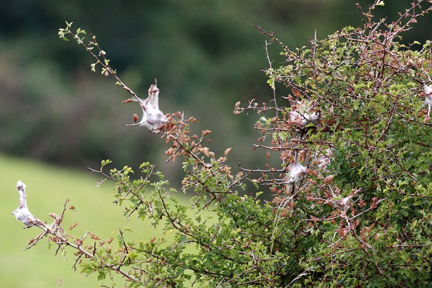

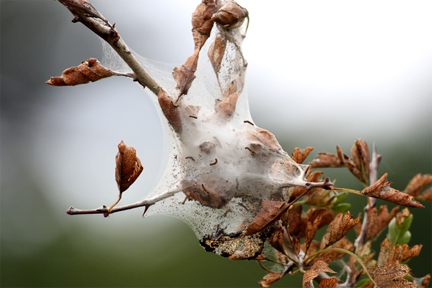
.jpg)
